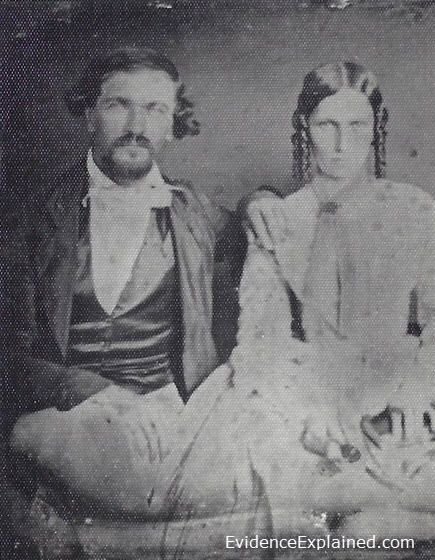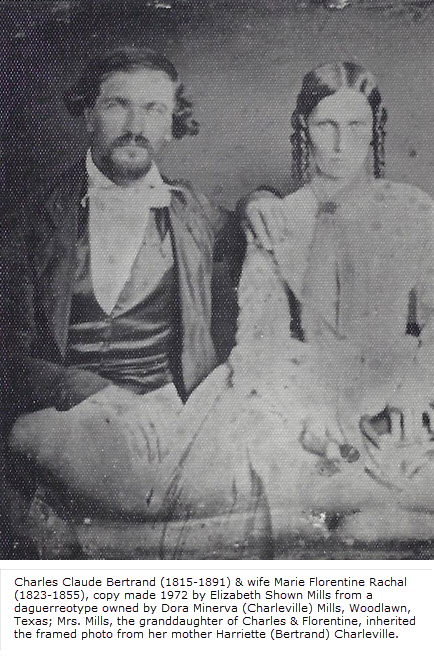
By Elizabeth Shown Mills
We’re studying Benjamin S. Anybody. We find his photograph online. Well, we find a photograph that is said to be him.
What do we do now? Let’s say we’re a writer. We blog, or we’re working on a journal article or a book. We carefully note the source, right?
But what if we are Michelle or Michel Anybody, Benjamin’s own descendant? We’re “just doing family history”—and the photograph is posted on a blog or a public tree at Ancestry or Geni. There’s no copyright notice and no identification of the photo’s owner.
Do we just click-and-copy? Do we add it to our own research notes without a citation because—obviously—the person who posted it online wanted it to be shared?
Recent posts at various social-media sites have tackled this topic with varied reactions.
- “Source citations don’t matter, if you’re not a professional.”
- “I don’t usually cite a source because the person who posted the photo has just copied someone else.”
- “I don’t mind others copying the photos I put online, but it would be nice to get credit.”
- “I’ve quit posting photos on my blog because people keep copying them without credit. Worse, they take the photo and attach to a different person altogether.
Aha! Now we’ve gotten to that other problem with click-and-copy: authenticity.
How do we know the identification of that photo is accurate?
Source identification has at least three purposes:
- To enable us or someone else to find that source again—an issue that doesn't apply if we copy the photo because the image is now in our own possession
- To give credit where due—the issue that most photo posters seem to be concerned about
- To help us verify the validity of the source
No. 3 is worth repeating.
We identify our sources to help us verify the validity of the source. Or the lack it.
If we just click-and-copy, without contacting the person who posted the photo, we shut the door on a very important conversation. What is the origin of this photograph? Does the original—wherever it is—have an inscription on the back that carries the name this person is said to be? Does that backside offer dates or a place or the name and location of a photographic studio, to help us ensure that the photo is attributed to the right person of that name? Was it passed down in the family along with Grandma’s letter saying, "This is the grandpa who taught me how to whittle, whistle, and make potato beer."
We need that conversation. We need that opportunity to question—and to evaluate.
Which of the attached photos would you rather add to your research files?
Posted 11 August 2016
issue with online photographs...I love this
As a photographer and possessor of many old photographs and one who has made copies (photographed) old photographs, I really like this. I recently posted a photograph of my great-great grandparents in a facebook group...which was a digital copy of a photograph that I took of an original pastel drawing (pretty sure it was original) that is now in possession of my cousin.....and I photographed my copy years ago. I did mention that it was "my copy".... and felt a bit uneasy about it....because I don't actually know if there is a way to recognize the original artist.
I am familiar with the idea of people ripping my current photographic work from the internet without purchasing but had no idea really how to handle all of the old photos in my possession.
Many of them are snapshots taken by unknown family members....some are professional photos with photo studio names from a couple hundred years ago....some are unidentified, but in my family papers and now in my possession....
I love researching and digging out the story....but I am not skilled with the documentation that is required....which is why I'm here...wanting to see if it is possible for me to learn these skills to be certified in the future. I usually write down every identifying piece of information as to where and when I find something and often take photos of all of it...outside the box, inside the book, etc, etc...so that I will have it. Of course, this is not the right way to start and I have lots of work ahead to make sure I can actually cite it.
I haven't got my copy of EE yet, so I am eager to see how to cite things such as old photographs and old postcards (I have an entire album of those from a great aunt) so that I can share them.
I'm feeling overwhelmed by all of the information and copyright frazzles my brain...I'm a detail person, but feel really out of my depth here....can't wait to get my book...
Debbie, research, analysis,
Debbie, research, analysis, and documentation can seem overwhelming. When EE arrives and you look at its size, you may feel overwhelmed all over again. Just remember the old joke: "How do you eat an elephant? One bite at a time."
1. Read the QuickStart guide that's tipped into the front cover. Focus on the basic pattern that applies to all types of sources. Each type calls for tweaking the basic pattern here and there; but if we understand the common elements, everything will be logical and, therefore, easier.
2. Read chapters 1 and 2. These cover the basic rules that apply to research, analysis, and documentation. Many of these are things we were taught back in middle school but may not have used since then.
3. When you have a source to cite, you can usually find that source type or keywords in the index. But don't just look for a specific model to copycat. When you identify the chapter that covers that kind of source, read the first few pages of that chapter. There, EE provides background on that type of source, how and why it was created, and things we need to consider when we use that type of source because reliability is at stake.
4. Skim through the chapter and read the explanatory notes that appear above and below the models. There, EE discusses various quirks that exist in that kind of record—quirks that affect what we need to identify or how we evaluate the record.
Amid this four-step process, if you feel overwhelmed, remember the purpose of why we do all this. We don't cite sources to impress folks or to give our research an aura of authenticity. We identify and evaluate our sources so that we can make reliable decisions about the past events we are studying.